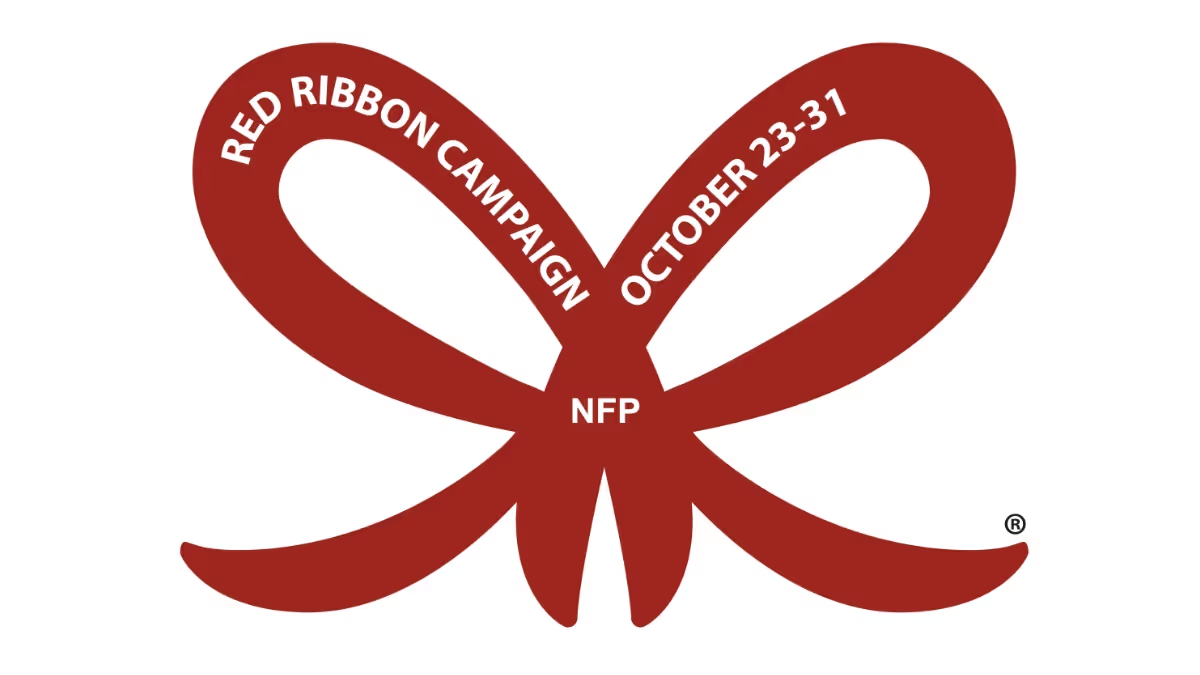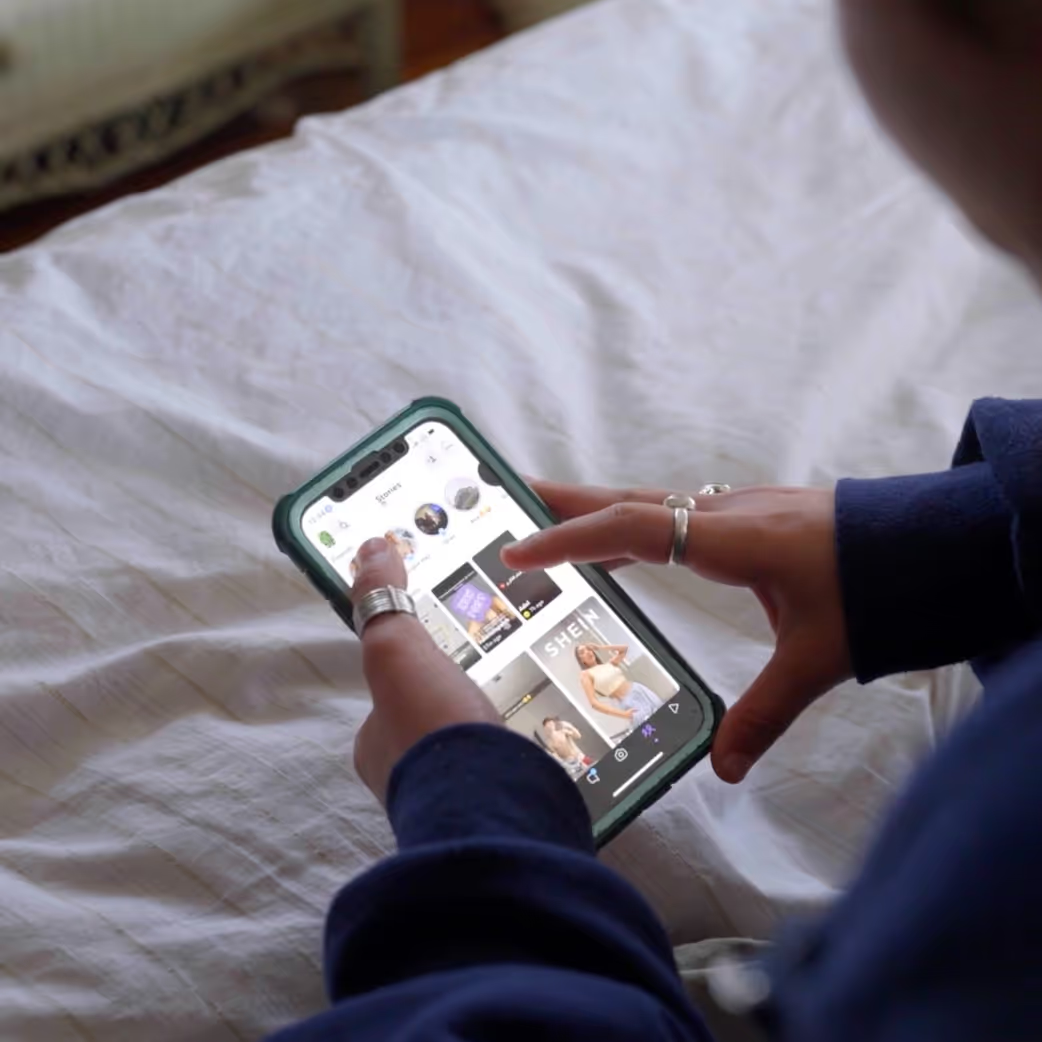



The longest-running youth drug prevention program in the country, Red Ribbon Week, is happening this week in schools and communities across the U.S.
This makes it an important time to raise awareness about a growing concern: the use of dangerous new opioid-like products called 7-hydroxymitragynine (also known as 7-OH). These products come from the kratom plant.
At times, you will hear the term “kratom” used, and at times “7-OH.” For this, I will use both the term kratom and 7-OH.
This is spreading fast, and it acts on opioid receptors in the brain, causing addiction and, tragically, leading to many recent deaths, especially among young adults.
Perhaps you have seen some news headlines, like this one in SF Gate this month:
“This Bay Area teen was set to go to college. Then he discovered ‘gas station heroin.’”
Here is an excerpt from the story:
“Like many 18-year-olds, Jeremy Rivers had been dealing with social anxiety for years by the time he got to the end of high school. But his problems melted away this June when he tried his first 7-OH pill…. Rivers first noticed 7-OH at a gas station five minutes away from his family’s Bay Area house and bought it out of curiosity. Immediately hooked… Within three months, he had spent over $5,000 on 7-OH.”
Back in the early 2000s, as a doctor, I was deeply worried about how many opioids were being prescribed to patients. I even made a short educational video to raise awareness. Little did I know that the opioid problem I was sensing would eventually claim nearly 100,000 lives a year, for many years in a row, due to overdoses.
Learn more about showing our movies in your school or community!
Join Screenagers filmmaker Delaney Ruston MD for our latest Podcast

Learn more about our Screen-Free Sleep campaign at the website!
Our movie made for parents and educators of younger kids
Learn more about showing our movies in your school or community!
When a product says “kratom,” it may be the natural plant powder with low levels of active compounds, or a concentrated version packed with far more 7-hydroxymitragynine (7-OH), the powerful and dangerous ingredient linked to addiction and overdose.
It’s gaining popularity among young people and is sold online and even in gas stations. Despite being illegal in several states, it’s still easily accessible. Kratom is specifically banned in several U.S. states and many countries, yet because it remains unregulated federally, it is easy to buy online or in convenience stores.
The FDA is very concerned and working to warn people about the risks posed by these products on the market.
Very alarming: products such as pills, gummies, drink mixes, or shots that contain high concentrations of 7-OH (or extracts enriched with 7-OH) are sometimes sold at gas stations or corner stores. These products may be marketed as “herbal supplements,” “plant-based,” or even “energy/mood support,” despite being much more potent and risky.
Forms: usually sold as powder, capsules, or tea, and often marketed as “natural,” “energizing,” or “plant-based pain relief.”
Because there’s no federal ban, each state decides for itself whether to restrict or allow kratom, resulting in a patchwork of laws.
Medical experts have said that Narcan, a drug used to reverse overdoses of other opioids like fentanyl, can be an effective treatment in the case of a 7-OH overdose. But in the five deaths for which L.A. authorities included 7-OH as a cause, multiple drugs were involved. Mixing with other substances, like alcohol, is particularly dangerous.
If you’re a parent, teacher, or teen reading this, please help spread the word. Kratom is not a harmless herb. It’s highly addictive, can shut down breathing, and is taking lives, often of young people who didn’t realize the risk.
My heart feels immensely for the horrific reality of addiction to opioids and all substances, because the line between life and death is so thin. I have had several patients tell me they have overdosed several times—one man six times—and still the pull makes them continue to use.
It must also be noted that the addiction recovery field is studying and advocating for 7-OH to have a role in helping people get off more dangerous opioids, similar to how I and other providers prescribe Suboxone to patients who are in recovery from heroin, fentanyl, and other opioid addictions. Many of my patients say that Suboxone has allowed them to have their lives back.
I do not yet know what role 7-OH will play in recovery, but there is no question that it should not be sold at gas stations or online.
Learn more about showing our movies in your school or community!
Join Screenagers filmmaker Delaney Ruston MD for our latest Podcast

Learn more about our Screen-Free Sleep campaign at the website!
Our movie made for parents and educators of younger kids
Join Screenagers filmmaker Delaney Ruston MD for our latest Podcast
Subscribe to our YouTube Channel! We add new videos regularly and you'll find over 100 videos covering parenting advice, guidance, podcasts, movie clips and more. Here's our most recent:
As we’re about to celebrate 10 years of Screenagers, we want to hear what’s been most helpful and what you’d like to see next.
Please click here to share your thoughts with us in our community survey. It only takes 5–10 minutes, and everyone who completes it will be entered to win one of five $50 Amazon vouchers.

The longest-running youth drug prevention program in the country, Red Ribbon Week, is happening this week in schools and communities across the U.S.
This makes it an important time to raise awareness about a growing concern: the use of dangerous new opioid-like products called 7-hydroxymitragynine (also known as 7-OH). These products come from the kratom plant.
At times, you will hear the term “kratom” used, and at times “7-OH.” For this, I will use both the term kratom and 7-OH.
This is spreading fast, and it acts on opioid receptors in the brain, causing addiction and, tragically, leading to many recent deaths, especially among young adults.
Perhaps you have seen some news headlines, like this one in SF Gate this month:
“This Bay Area teen was set to go to college. Then he discovered ‘gas station heroin.’”
Here is an excerpt from the story:
“Like many 18-year-olds, Jeremy Rivers had been dealing with social anxiety for years by the time he got to the end of high school. But his problems melted away this June when he tried his first 7-OH pill…. Rivers first noticed 7-OH at a gas station five minutes away from his family’s Bay Area house and bought it out of curiosity. Immediately hooked… Within three months, he had spent over $5,000 on 7-OH.”
Back in the early 2000s, as a doctor, I was deeply worried about how many opioids were being prescribed to patients. I even made a short educational video to raise awareness. Little did I know that the opioid problem I was sensing would eventually claim nearly 100,000 lives a year, for many years in a row, due to overdoses.
When a product says “kratom,” it may be the natural plant powder with low levels of active compounds, or a concentrated version packed with far more 7-hydroxymitragynine (7-OH), the powerful and dangerous ingredient linked to addiction and overdose.
It’s gaining popularity among young people and is sold online and even in gas stations. Despite being illegal in several states, it’s still easily accessible. Kratom is specifically banned in several U.S. states and many countries, yet because it remains unregulated federally, it is easy to buy online or in convenience stores.
The FDA is very concerned and working to warn people about the risks posed by these products on the market.
Very alarming: products such as pills, gummies, drink mixes, or shots that contain high concentrations of 7-OH (or extracts enriched with 7-OH) are sometimes sold at gas stations or corner stores. These products may be marketed as “herbal supplements,” “plant-based,” or even “energy/mood support,” despite being much more potent and risky.
Forms: usually sold as powder, capsules, or tea, and often marketed as “natural,” “energizing,” or “plant-based pain relief.”
Because there’s no federal ban, each state decides for itself whether to restrict or allow kratom, resulting in a patchwork of laws.
Medical experts have said that Narcan, a drug used to reverse overdoses of other opioids like fentanyl, can be an effective treatment in the case of a 7-OH overdose. But in the five deaths for which L.A. authorities included 7-OH as a cause, multiple drugs were involved. Mixing with other substances, like alcohol, is particularly dangerous.
If you’re a parent, teacher, or teen reading this, please help spread the word. Kratom is not a harmless herb. It’s highly addictive, can shut down breathing, and is taking lives, often of young people who didn’t realize the risk.
My heart feels immensely for the horrific reality of addiction to opioids and all substances, because the line between life and death is so thin. I have had several patients tell me they have overdosed several times—one man six times—and still the pull makes them continue to use.
It must also be noted that the addiction recovery field is studying and advocating for 7-OH to have a role in helping people get off more dangerous opioids, similar to how I and other providers prescribe Suboxone to patients who are in recovery from heroin, fentanyl, and other opioid addictions. Many of my patients say that Suboxone has allowed them to have their lives back.
I do not yet know what role 7-OH will play in recovery, but there is no question that it should not be sold at gas stations or online.
Subscribe to our YouTube Channel! We add new videos regularly and you'll find over 100 videos covering parenting advice, guidance, podcasts, movie clips and more. Here's our most recent:
Sign up here to receive the weekly Tech Talk Tuesdays newsletter from Screenagers filmmaker Delaney Ruston MD.
We respect your privacy.

The longest-running youth drug prevention program in the country, Red Ribbon Week, is happening this week in schools and communities across the U.S.
This makes it an important time to raise awareness about a growing concern: the use of dangerous new opioid-like products called 7-hydroxymitragynine (also known as 7-OH). These products come from the kratom plant.
At times, you will hear the term “kratom” used, and at times “7-OH.” For this, I will use both the term kratom and 7-OH.
This is spreading fast, and it acts on opioid receptors in the brain, causing addiction and, tragically, leading to many recent deaths, especially among young adults.
Perhaps you have seen some news headlines, like this one in SF Gate this month:
“This Bay Area teen was set to go to college. Then he discovered ‘gas station heroin.’”
Here is an excerpt from the story:
“Like many 18-year-olds, Jeremy Rivers had been dealing with social anxiety for years by the time he got to the end of high school. But his problems melted away this June when he tried his first 7-OH pill…. Rivers first noticed 7-OH at a gas station five minutes away from his family’s Bay Area house and bought it out of curiosity. Immediately hooked… Within three months, he had spent over $5,000 on 7-OH.”
Back in the early 2000s, as a doctor, I was deeply worried about how many opioids were being prescribed to patients. I even made a short educational video to raise awareness. Little did I know that the opioid problem I was sensing would eventually claim nearly 100,000 lives a year, for many years in a row, due to overdoses.

Research shows that adolescent substance initiation — teens trying smoking or drinking for the first time — spikes during the summer. More downtime often means more screen time, which brings increased exposure to what’s trending. One trend that’s hard to ignore? A surge in cigarette imagery across films, music videos, and pop culture moments. Even Beyoncé lit up onstage recently. So why is smoking getting a media makeover — and how can we talk to teens meaningfully about it?
READ MORE >
Today I’m sharing a high-level review of what many kids and teens are being shown online in relation to drugs/substances, whether in shows, YouTube, or social media in general. I also offer a technique that you can use for bringing these things up with tweens in your life in a non-confrontational way that is more likely to get them to offer up their opinions on the subject.
READ MORE >for more like this, DR. DELANEY RUSTON'S NEW BOOK, PARENTING IN THE SCREEN AGE, IS THE DEFINITIVE GUIDE FOR TODAY’S PARENTS. WITH INSIGHTS ON SCREEN TIME FROM RESEARCHERS, INPUT FROM KIDS & TEENS, THIS BOOK IS PACKED WITH SOLUTIONS FOR HOW TO START AND SUSTAIN PRODUCTIVE FAMILY TALKS ABOUT TECHNOLOGY AND IT’S IMPACT ON OUR MENTAL WELLBEING.
